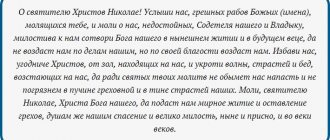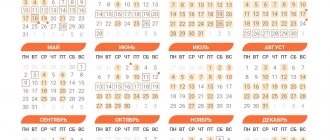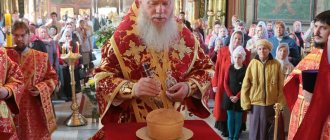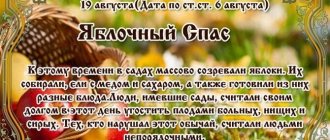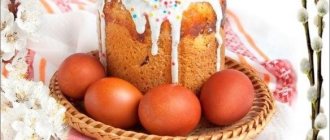Maslenitsa is a holiday with a very ancient history, which over several millennia has managed to “grow” with many traditions, customs, and signs and become truly popular.
This is one of the few East Slavic events that successfully “survived” the adoption of Christianity by Russia: saying goodbye to winter and welcoming spring surprisingly harmoniously “merged” with preparations for the Orthodox Lent.
The timing of the celebration is “floating”: it begins 56 days before Easter. In 2022, they fall from February 28 to March 6. Every day has its own characteristics.
History from A to Z
Initially, Maslenitsa is a traditional holiday of the Eastern Slavs, symbolizing the farewell or “expulsion” of winter and the “welcome” of spring. Pancakes, as its integral attribute, symbolized Yarilo, the sun god.
There were analogues of such a holiday in many pagan mythologies. A kind of winter-spring carnival called Vastlavya existed in Scandinavia. Kurentovanje and Zvonchary were celebrated in the Balkans.
The ancient Slavs celebrated it for two weeks, always “capturing” the spring equinox. It was believed that from this time on, the sun god gradually “melted” the snowdrifts, the day lengthened, and the next life cycle began.
Accordingly, this is the ancient Slavic New Year. And burning an effigy is a rite of purification by fire, an endless renewal of all that is good and the burning of all that is bad.
According to another, less popular version, it was dedicated to Veles, the god of livestock and agriculture. The burning of the effigy and all the fun during the week are regarded as sacrifices to him. Therefore, the fields were fertilized with ashes, expecting a rich harvest.
After the adoption of Christianity in Rus', Maslenitsa, unlike many pagan holidays, practically did not “suffer.” The Church looked at the burning of effigy and the rituals accompanying it “with a blind eye”, not approving, but not prohibiting them.
And by the 17th century it was “legalized” by including it in the Saints and reducing it to 7 days. Church hierarchs took advantage of the presence in the Bible of references to Cheese Week (this determined the date) and Forgiveness Sunday.
True, for this we had to “shift” the celebration about 2 weeks ago. It was quite organically “timed” to coincide with Lent.
At the same time, its new names appeared, related to the upcoming food restrictions. But they did not go “to the people”, remaining mainly in the calendar:
- Cheese Week or Cheese Week;
- Meat Empty, Meat Empty Week.
The celebration, while supporting folk traditions, was not neglected by royalty.
Peter I rode through the streets of St. Petersburg on a ship drawn by horses. His daughter Elizabeth always ate two dozen pancakes during the week. And Catherine II organized massive costumed processions and balls.
What is Maslenitsa and when is it celebrated?
Maslenitsa is a traditional celebration of the arrival of spring, common among Slavic peoples.
The dates of Maslenitsa depend on what day Easter falls on and therefore change every year. In 2022, this is the week from March 8 to 14. The tradition of noisily celebrating the end of winter is characteristic of the Carnival pre‑Lent festival for many Catholic European countries: Italy and Germany hold lush carnivals, and residents of Eastern Europe celebrate a three-day Meat Empty, very similar to Maslenitsa. Celebrating Masopust, The Czech Republic's Crazy Carnival.
How exactly and correctly they call all 7 days with traditions and customs
The first three days of the week are united under the name “Narrow Maslenitsa”, the next four are called “Wide”. If from Monday to Wednesday some housework was still allowed, then from Thursday to Sunday it was supposed to concentrate as much as possible on fun and entertainment.
By the way, we indicate in the past tense how it was, but even now many observe the described traditions and customs.
Monday: Meeting
The first day of the week was reserved for married women to visit their parents. Since the girl after the wedding moved to her husband’s house (and most often, her mother-in-law’s), she did not have the opportunity to see them often.
In the evening, older relatives “pulled up”, the matchmakers met each other in the house of the wife’s parents. Their duty was to set a rich table and sincerely welcome the parents of their daughter's husband.
Monday was also reserved for preparing for upcoming entertainment. On the first day of the holiday week, slides and snow forts were built, swings and carousels were installed. They made a stuffed Maslenitsa, took it around the city/village and installed it in the square.
The most important custom of Monday is baking the first pancake. They treated the poor to it, asking in return to pray for the remembrance of the souls of all deceased relatives.
Tuesday: Flirting
This day was dedicated to a kind of “browse”. The older generation encouraged young people to meet and communicate with a “long-term view” of future marriages. To do this, they invited relatives and friends to visit, setting a rich table.
Moreover, if the young man and the girl liked each other, and the parents were not against marriage, they did not delay the wedding. During Lent, weddings were prohibited, and after it, on Krasnaya Gorka, weddings were celebrated “en masse.”
On Tuesday, mummers walked the streets and “folk performance” concerts were held. One could often watch performances of buffoons, puppet theaters, trained animals and other “wonderful miracles.”
Wednesday: Gourmand (or Fast Wednesday)
On Wednesday, the son-in-law’s “sacred duty” was to go to his mother-in-law’s “for pancakes.” Moreover, he went to his wife’s mother not alone, but taking with him many relatives and friends. She was supposed to treat them all, demonstrating her affection to her son-in-law in every possible way.
The reason for this behavior is extremely simple: the mother-in-law’s kind attitude towards her son-in-law on this day was a reliable sign that guaranteed her daughter well-being in the family for the entire next year. And also a guarantee of a good attitude towards her from her father-in-law and mother-in-law.
Thursday: Razgulyay (or Broad Thursday)
The first day of mass folk festivities and traditional entertainment. From that time on, any household work was prohibited. Residents of a city or village gathered in the central square, where the fair was already running.
Everyone could find entertainment to their liking:
- competitions for strength, endurance, agility;
- comic fist fights;
- “assault” and “defense” of a fortress built from snow;
- sleigh rides, cart rides, horseback riding;
- snowball game;
- carousels, swings, ice slides;
- songs, dances, round dances around the fires, jumping over the fire.
Of course, an integral part of such festivities were pancakes, other various treats, sweets, hot tea and other drinks. Often they were simply handed out to passers-by.
Friday: Mother-in-Law Evenings
Time for a “return visit” from the mother-in-law to her son-in-law. Moreover, he and his father-in-law had to provide the “young family” with everything they needed in advance, sending a ladle, a frying pan, butter and flour to their house.
In the morning, my son-in-law’s friends reminded my mother-in-law about the visit. In this case, her daughter was “responsible” for the treat. The mother-in-law also did not go to visit alone, bringing with her friends and relatives and “demonstrating” to them how lucky her daughter was with her husband.
Saturday: Sisters-in-law's Gatherings
Time for a kind of “bachelorette party”.
The husband's sister invited his wife and her friends to visit. Her brother's wife was also supposed to come with company. Moreover, if the sister-in-law was married, she tried to bring married friends with her, if on the contrary, “single” ones.
The girls talked, gossiped and, of course, enjoyed pancakes. It was considered a good omen for each of the girls to give small symbolic gifts to the rest of those present.
Sunday: Farewell (or Forgiveness Sunday)
The culmination of the entire holiday week, the last day before Lent. On Sunday, it was imperative to ask for forgiveness from everyone accidentally (and even more so intentionally) offended during the year, and to resolve any disputes.
Corresponding services (the rite of forgiveness) were performed in each temple. At first, the abbot himself asked for forgiveness from the clergy and parishioners. The believers then bowed to each other, doing the same.
But the list of necessary things was not exhausted. It was also supposed:
- visit the graves of relatives with pancakes (and you were supposed to go to the cemetery and back in silence);
- finish all the holiday food that was prohibited for consumption during Lent (the leftovers were forbidden to be thrown away, they had to be distributed to the poor or burned; this especially concerned pancakes);
- go to the bathhouse, wash, wash clothes;
- Wash all dishes thoroughly.
In the evening, people again gathered in the square for the ceremonial burning of the effigy (nowadays this is done mainly during the day). Sometimes traditional funeral foods (leftovers) - flatbread, eggs, pancakes - were thrown into the fire.
The remaining ashes were collected and scattered over the fields before sowing. This was considered necessary for reaping good harvests.
Signs
- If the pancakes came out beautiful and fluffy, then prosperity will come this year.
- Thick, crumpled, tasteless pancakes mean trouble.
- The tastier the pancakes are, the more money and prosperity there will be in the family.
- The higher the stack of pancakes, the better the harvest.
- If the weather is cold on Maslenitsa day, the summer will be hot, and if it rains, there will be a large harvest of mushrooms in the fall.
- If a young girl meets a tipsy man on one of the holiday days, she will meet her betrothed in a month.
- How many holes there are in a pancake - so many children will be born.
2 simple recipes for the most delicious Pancake Day pancakes
Maslenitsa is not the best time for experiments like American pancakes, Japanese dorayaki or French crepes. Here housewives are recommended to pay tribute to traditions and prepare pancakes according to classic recipes.
Thin “openwork”
They look very festive. You can serve them with anything: honey, sour cream, cottage cheese, condensed milk, jam, or just like that.
Required ingredients:
- milk - 400 ml;
- chicken eggs - 2 pcs.;
- granulated sugar - 2 tbsp. l. or a little more (to taste);
- salt - 1 tsp;
- corn or potato starch - 200 g;
- sunflower oil - 2 tbsp. l.
Prepare quickly and easily:
- Pour milk into a bowl, add starch. It does not dissolve immediately, this is normal. It is advisable to take corn starch; it has a neutral taste. Potatoes (especially those of poor quality or those with an expiration date) can give the finished dish a noticeable specific taste that not everyone likes.
- Add eggs one at a time, stirring each time until smooth.
- Add salt, sugar, sunflower oil. Mix again and leave the dough for 15-20 minutes.
- Lightly grease the pan with sunflower oil (it’s convenient to do this with a silicone brush). Then you don’t need to add it during the frying process: the pancakes will turn out very fatty and “dense.”
- Pour the dough into the pan in small portions (depending on the diameter of the frying pan). To make the pancakes thin and delicate, it is important to quickly and evenly distribute it over the surface. Fry for about half a minute on each side.
This volume of dough when frying in a frying pan with a diameter of 22 cm is enough to prepare 14-15 pancakes.
Guryevsky "precocious"
Popular pre-revolutionary recipe. These were invariably served in Moscow restaurants during the Soviet era. One portion of dough is guaranteed to be enough even for a large family.
They are almost not sweet, so it is better to serve them with caviar, salted fish, and other similar fillings.
Required ingredients:
- premium wheat flour - 800 g;
- chicken eggs - 8 pcs.;
- milk or curdled milk - 800 ml;
- granulated sugar - 2 tbsp. l. or to taste;
- salt - 1 tbsp. l.;
- butter - 100 g;
- sunflower oil - for frying.
How to cook:
- Separate the whites from the yolks and put them in the refrigerator temporarily.
- Melt the butter, let cool slightly.
- Pour milk or curdled milk into a large bowl, add yolks, melted butter, salt and sugar. Stir briefly to combine ingredients
- Add sifted flour in 3-4 additions. Stir the dough thoroughly, ensuring that there are no lumps. Add water to the desired creamy consistency. It is impossible to indicate its exact volume - flour is different everywhere.
- Place the dough in the refrigerator for an hour. After the specified time has passed, stir in the egg whites, whipped into a strong foam. This must be done carefully so that the dough does not lose its airiness.
- Fry in a frying pan lightly greased with sunflower oil for 1-2 minutes on each side.
You should start frying as soon as the dough is ready. It cannot be stored.
Why is it customary to cook pancakes on Maslenitsa?
Since childhood, we have known that a round and ruddy pancake symbolizes the sun returning after winter. But scientists believe Propp V. Ya. Russian Agrarian Holidays, 2000, that this widespread interpretation is unfounded. And it is impossible to answer with confidence why the dish became the main one on the festive table.
Folklorists suggest Sokolova V.K. Spring-summer calendar rituals of Russians, Ukrainians and Belarusians of the 19th - early 20th centuries, 1979, that pancakes were simply a popular and easy pastry for celebrations. For example, they were traditionally prepared for funeral feasts, which also speaks in favor of the “funeral” theory of the origin of Maslenitsa. According to ancient custom, the first Maslenitsa pancake was “for the repose”: it was given to the poor or simply placed on the window to honor the memory of the deceased.
Kovalev N.I. Russian Cooking, 1990 is considered to be primordially Russian. Not thin, but thick yeast pancakes. They were often made with buckwheat and rye flour.
Yeast pancakes. Image: miracle2307/ Depositphotos
Preparing the dough for holiday pancakes was a whole ritual. In some regions they used Bozheryanov I.N. How the Russian people celebrated and celebrates the Nativity of Christ, New Year, Epiphany and Maslyanitsa: historical essay, 1894. melted snow. Housewives kneaded the dough at night and, using spells, asked the month to make the dough fluffy.
It’s interesting that not all Slavic countries bake pancakes for Maslenitsa. For example, in Belarus and Ukraine, Tolstaya S. M. Polesie folk calendar is sculpted for the festive table. M., 2005 dumplings.
In other countries
Pagan peoples of other countries had celebrations similar to the Slavic one; accordingly, the last week before Lent in many of them was similar to the Russian Maslenitsa. For example, Catholics everywhere adopted carnivals, associated with the same unbridled fun as in Rus'. At the same time, the “masks”, the masks under which Christians hid, according to many recollections of contemporaries, seemed to become permission for all sorts of atrocities.
It is worthy of surprise that European travelers of the 16th-17th centuries. They usually dismissively describe Russian Maslenitsa as “unbridled drunkenness,” as if forgetting about their own “traditions,” which are in no way related to Christianity.
Italian Maslenitsa. Carnival in Venice. Catholics in Italy, Brazil and Argentina call this holiday carnival (carne “meat” + vale “farewell”).
Why do people burn effigy on Maslenitsa?
Another symbol of the holiday is a straw doll, which is burned at the stake at the end of the week. The scarecrow of Maslenitsa is most often made in the form of a woman, although in the Vitebsk region for the holiday they make the “Funeral of Grandfather” - a Belarusian ritual of the first day of Maslenitsa and bury the grandfather.
A doll made from straw and scrap materials is decorated, dressed in old clothes and placed on a high pole. By the end of Maslenitsa week, the effigy is burned or buried.
Burning scarecrow. Image: Ruslan117/ Depositphotos
Similar rituals are performed during folk festivals in different European countries. According to some scientists, Adonyev S.B. Ritual effigy: the projective principle of ritual practices, the effigy personifies the death and rebirth of all nature or a specific deity - usually associated with agriculture.
Every year, with the onset of spring, the old, outdated straw was burned. Sokolova V.K. Spring-summer calendar rituals of Russians, Ukrainians and Belarusians of the 19th - early 20th centuries, 1979, returning it to the land. And in return it had to be reborn and bear fruit. Therefore, sometimes the remains of the stuffed animal were scattered Frazer, J. The Golden Bough, 1928. across the fields and placed in mangers for livestock so that the harvest and offspring would be better.
There is also a theory by Adonyev S.B. Ritual effigy: the projective principle of ritual practices, according to which the doll is considered as the embodiment of winter, evil spirits, death and disease. They burn it to cleanse themselves and get rid of all accumulated troubles.



